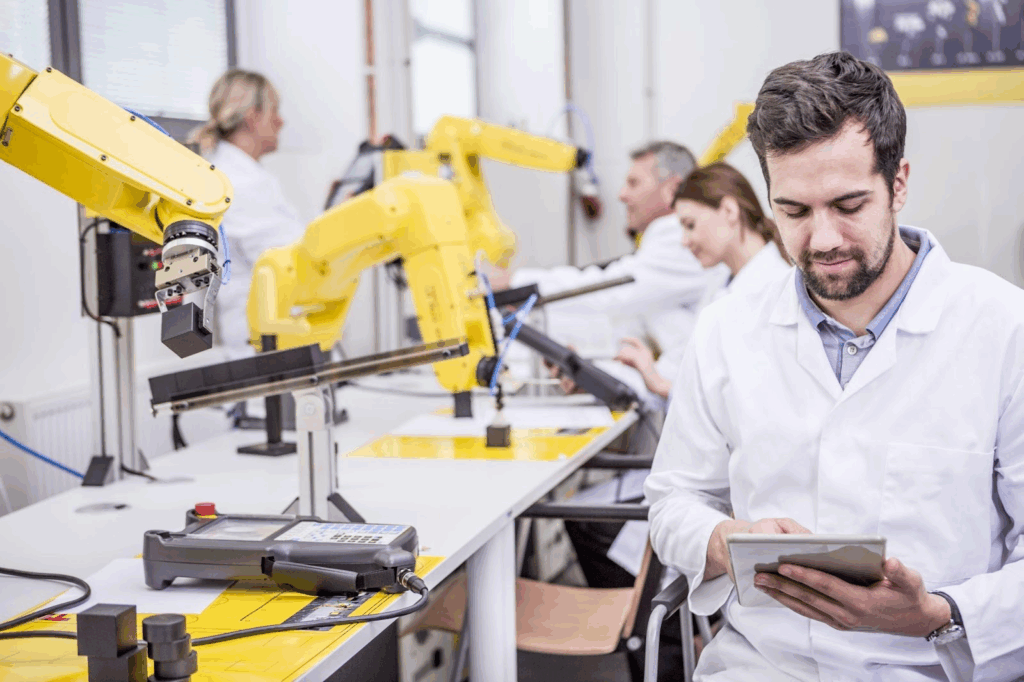
(photo credit: Microsoft Stock Images)
Equipment purchases seem simple on paper. Cost tag, specs, warrantee. Click, sign, deliver. Reality doesn’t come anywhere close. Decisions begin much further back than when an invoice is sent out. Weeks, sometimes months, of investigation, demonstration, and assessment come before the machine touches the floor. What seems simple is actually a progression of interconnected decisions with ripple effects throughout operations, expense, and long-term performance.
Evaluating Operating Requirements
Volume of production. Workflow compatibility. Future development. All these need attention. A machine might suit this year’s output just fine but what will next year’s estimate be? Energy consumption counts. Schedule for maintenance counts. Compatibility with installed systems counts. Neglect one, and small inefficiencies grow into delays, extra costs, and working frustration. Uncomplicated questions get complex. How much down-time is allowed? How much throughput can the team handle? Responses dictate the buy as much as they dictate the success of an investment.
Vendor Competencies
The reputation of the manufacturer counts. History, support, delivery schedules. A trustworthy supplier becomes an integral part of operations itself. Companies that employ contract manufacturing services comprehend this subconsciously. Choices in suppliers make a difference in timelines, quality, and eventually, expenses. Technical support, troubleshooting, and stock for spare components become intangible but integral components of the investment. Omission of these facets tends to materialize months later in terms of unforeseen downtime, out-of-sync processes, or unexpected expenses that hamper manufacturing.
Monetary and Developmental Considerations
Purchase price is merely the beginning. Energy use. Parts replacements. Depreciation. Payback period. ROI. These are not theoretical notions. These determine if the machine is viable financially or merely a pretty paperweight. Leasing or installment payments can help with cash flow. Estimating lifecycle cost means planning ahead and willing to question assumptions regarding anticipated use and future requirements.
Testing and Demonstration
Observation serves as a form of validation. Experimental trials unveil constraints while also highlighting concealed benefits. Factors such as throughput, ergonomics, safety, and compatibility become apparent when equipment is operational. Employees frequently identify inefficiencies that designers did not foresee. Trials convert theoretical specifications into empirical assessments. Feedback mechanisms are established prior to acquisition, minimizing unforeseen challenges and ensuring the team is adequately equipped for integration.
Integration Planning
Machines do not exist in isolation. They enter workflows, influence staff, affect layout, and require training. Planning includes installation, process adjustment, and connectivity with existing systems. Automated monitoring or digital integration becomes relevant only if considered early. Preparation reduces downtime and accelerates gains, ensuring the machine contributes immediately.
Strategic Influence
Equipment shapes operations for years. Early investment in research, evaluation, and supplier assessment translates into performance, reliability, and growth. Machines become assets that support strategy rather than tools that fill space. A purchase made with foresight compounds benefits, while one made hastily compounds costs.
Investing starts months before the purchase order is ever signed. Requirements for operating the equipment, supplier consistency, lifecycle expenses, testing, and integration planning begin weeks, sometimes months, before the sale. Early decisions make up the value, efficiency, and longevity of the machine. Look over the infographic below to learn more.
